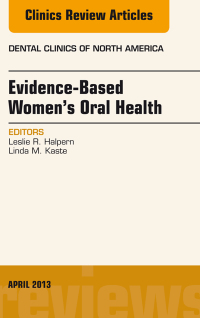-89%
Fundamentals of Esthetic and Conservative Restorative Dentistry: A Comprehensive Guide
This comprehensive learning experience delves into the cornerstone principles and innovative techniques of esthetic and conservative dentistry. It empowers practitioners with the knowledge and skills to achieve exceptional and aesthetically pleasing outcomes.
Part 1: Artistic Principles
Esthetics and esthetic dentistry encompass the harmonious interplay of art and science. This module introduces the fundamental principles of aesthetics, distinguishing between cosmetic and artistic approaches. It explores the application of artistic concepts, such as micro and macro esthetics, to achieve natural-looking restorations.
Part 2: Esthetic Analysis
A comprehensive esthetic analysis forms the foundation for successful restorative treatments. Practitioners learn to evaluate facial and oral-facial esthetics, including the relationships between teeth, gums, and the surrounding structures. This in-depth analysis enables the precise identification of areas for improvement and the development of tailored treatment plans.
Part 3: Photography and Digital Smile Design
Photography plays a crucial role in capturing and communicating esthetic concerns. This module covers advanced techniques for dental photography, including the use of specialized equipment and software. Practitioners develop the skills to create realistic digital smile designs, allowing patients to visualize and participate in the treatment planning process.
Part 4: The Bonded Functional Esthetic Prototype
The Bonded Functional Esthetic Prototype (BFEP) technique is a game-changer in restorative dentistry. Practitioners learn how to utilize temporary prototypes to assess and refine treatment outcomes before committing to permanent restorations. This innovative approach enhances communication, reduces risks, and ensures patient satisfaction.
Part 5: Dental Ceramics and Material Selection
Selecting the optimal dental ceramic is essential for achieving desired esthetic and functional results. This module provides a comprehensive overview of contemporary ceramic materials, their properties, and their suitability for specific clinical situations. Practitioners develop the expertise to make informed decisions regarding the use of veneers, crowns, inlays, and onlays.
Part 6: Minimalistic Restorative Preparations
Minimalistic preparations preserve tooth structure while ensuring optimal restoration longevity. This module covers advanced techniques for anterior and posterior preparations, including the use of atraumatic methods and the concept of the “blockout restoration.” Practitioners gain the skills to create preparations that minimize damage to healthy tissues and maintain the integrity of the tooth.
Part 7: Direct Restorations and Bio-Esthetics
Direct composite restorations offer versatility and immediacy in esthetic treatments. This module explores advanced techniques for creating natural-looking anterior and posterior restorations. Practitioners learn about the latest bonding materials, shade analysis, and the principles of bio-esthetics, which focuses on mimicking the natural tooth structure and function.
Part 8: Digital Dentistry and the Digital Dental Team
Digital technology is transforming the field of dentistry. This module introduces the concept of the “Digital Dental Team,” a collaborative approach that involves dentists, ceramists, and technicians. Practitioners learn about the benefits of digital workflows, including improved communication, increased efficiency, and enhanced patient outcomes.
Part 9: Adhesion and the Final Touch
Adhesion is the cornerstone of successful restorations. This module covers current concepts in adhesion and cementation, ensuring long-lasting and reliable bond strengths. Practitioners also explore the art of the “final touch,” which involves meticulous detailing and finishing techniques that elevate the esthetic result.
Conclusion
This in-depth learning experience provides practitioners with a comprehensive understanding of the fundamentals, techniques, and materials essential for successful esthetic and conservative restorative dentistry. By embracing these principles and incorporating them into their practice, practitioners can achieve predictably stunning outcomes that enhance patient satisfaction and elevate the art of dentistry.










Reviews
Clear filtersThere are no reviews yet.